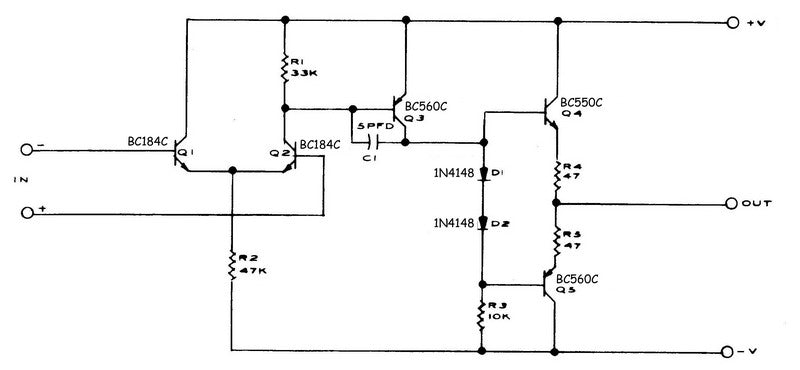In
yesterday's post, I described the differences we heard between op-amps. The TL072 with the FET input softened the sound at the expense of detail, forcing us back to the original 709C. It was a bit more aggressive than we liked but it didn't lose anything.
We wondered if it wouldn't be possible to have the best of both worlds. Or, maybe even something altogether better, and that's when we rolled our sleeves up and started to really understand the op-amp. And what we learned changed everything.
We use the term "op-amp" as a generic reference to an integrated circuit linear amplifier. But, that is not correct. In fact, the term op-amp is shorthand for a specific type of circuit, the Operational Amplifier. From Wikipedia:
An operational amplifier (often op-amp or opamp) is a DC-coupled high-gain electronic voltage amplifier with a differential input and, usually, a single-ended output. In this configuration, an op-amp produces an output potential (relative to circuit ground) that is typically hundreds of thousands of times larger than the potential difference between its input terminals. Operational amplifiers had their origins in analog computers, where they were used to perform mathematical operations in many linear, non-linear, and frequency-dependent circuits.
The popularity of the op-amp as a building block in analog circuits is due to its versatility. By using negative feedback, the characteristics of an op-amp circuit, its gain, input and output impedance, bandwidth etc. are determined by external components and have little dependence on temperature coefficients or manufacturing variations in the op-amp itself.
What's all this gobbledygook mean? Well, to understand that (as Stan and I had to so many decades ago) it's necessary to wrap our arms around the op-amp's basic circuit. That circuit is relatively simple. We can make an op-amp with as few as three active devices: a pair of transistors (or tubes) for the input differential pair, and a single transistor for the output gain stage. That's it. If we want to further fancy it up we can add an output pair acting as a buffer to drive cables properly.
Here's a picture of a simple, 5-transistor discrete op-amp.

What makes this a
discrete op-amp vs. an
IC op-amp? Nothing, when it comes to the circuit. They are identical from a circuit standpoint. What makes this a discrete op-amp vs. a chip op-amp is simply packaging.
Discrete means separate bits to make the circuit,
integrated means the bits are integrated into one packaged circuit (integrated. Get it?).
Tomorrow I'll help you understand what's going on with this circuit.
 What makes this a discrete op-amp vs. an IC op-amp? Nothing, when it comes to the circuit. They are identical from a circuit standpoint. What makes this a discrete op-amp vs. a chip op-amp is simply packaging. Discrete means separate bits to make the circuit, integrated means the bits are integrated into one packaged circuit (integrated. Get it?).
Tomorrow I'll help you understand what's going on with this circuit.
What makes this a discrete op-amp vs. an IC op-amp? Nothing, when it comes to the circuit. They are identical from a circuit standpoint. What makes this a discrete op-amp vs. a chip op-amp is simply packaging. Discrete means separate bits to make the circuit, integrated means the bits are integrated into one packaged circuit (integrated. Get it?).
Tomorrow I'll help you understand what's going on with this circuit.








